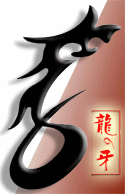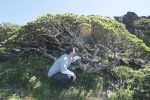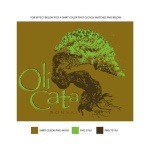Bucida from Mexico
+11
fiona
Enrique
Rob Kempinski
newzealandteatree
john5555leonard
carlos
hiram
jrodriguez
Agus Pandetria
PROTONWIRA
Robert Steven
15 posters
Page 1 of 3
Page 1 of 3 • 1, 2, 3 
 Re: Bucida from Mexico
Re: Bucida from Mexico
Last edited by Robert Steven on Sat Sep 17, 2011 9:46 am; edited 1 time in total

Robert Steven- Member
 Re: Bucida from Mexico
Re: Bucida from Mexico
The largest Bucida ever brought from Mexico? Definitely from Mexico to Indonesia.....but....
Robert,
Before Mexico came into the picture, these trees were collected from the Bahamian islands by A guy known as "the hippie", the late great Joe Samuels (R.I.P.), Carlos Consuegra, Harry Roberts, Mary Madison, Roberto del Pozo and other Floridians. Some of these trees found their way to Puerto Rico. In the early days, Bucida spinosa was known simply as Bahamian Black Olive or Spiny olive.
The Bahamian trees, very much like the Pemphis acidula from East Java, are more dynamic and contorted. Their Meixican counterparts seem to be more straight. You know what island life, sea water, constant wind and and living in the hurricane/typhoon path can do to a plant!
Anyhow, great tree and beautiful design.
Kind regards,
Jose Luis
Jose Luis
Robert,
Before Mexico came into the picture, these trees were collected from the Bahamian islands by A guy known as "the hippie", the late great Joe Samuels (R.I.P.), Carlos Consuegra, Harry Roberts, Mary Madison, Roberto del Pozo and other Floridians. Some of these trees found their way to Puerto Rico. In the early days, Bucida spinosa was known simply as Bahamian Black Olive or Spiny olive.
The Bahamian trees, very much like the Pemphis acidula from East Java, are more dynamic and contorted. Their Meixican counterparts seem to be more straight. You know what island life, sea water, constant wind and and living in the hurricane/typhoon path can do to a plant!
Anyhow, great tree and beautiful design.
Kind regards,
Jose Luis
Jose Luis

jrodriguez- Member
 Re: Bucida from Mexico
Re: Bucida from Mexico
Robert and Jose Luis,
Is this tree endemic to The Bahamian areas and Mexico? we have Bucida here, and the leaves looks the same as the ones you got but no way near the trunk character that your trees have. I have tried a large Bucida- my first tree, it died when I repot and cleaned the roots of the original garden soil.
but yours never seems to mind being bare rooted.
regards,
jun
Is this tree endemic to The Bahamian areas and Mexico? we have Bucida here, and the leaves looks the same as the ones you got but no way near the trunk character that your trees have. I have tried a large Bucida- my first tree, it died when I repot and cleaned the roots of the original garden soil.
but yours never seems to mind being bare rooted.
regards,
jun
Guest- Guest
 Re: Bucida from Mexico
Re: Bucida from Mexico
I am not sure if I agree to what Jose said, at least, all the good Bucida bonsai I have ever seen (all with dramatic trunk lines and wild characters) are from Mexico..including this one I have.
Bucida is quite sensitive for repotting, but I learned the secret from the Mexican (Enrique is the expert in Bucida). When you do the repotting, you can do root prunning if neccessary, but then you need to defoliate...and the secret is to put the pot on a tray filled with water which cover about 1/3 of the pot. Then put it under shade until new shoots coming out in good health.
If you do severe roots prunning as I did for long transportation, after I repotted, I bandaged the trunk with wet fabric, cover the whole tree with plastic, put in the water tray and under shade until the new shoots coming out healthy enough. You need to make some holes on the plastic cover for breath, but keep the humidity and keep the bandages wet all the time....
Bucida is quite sensitive for repotting, but I learned the secret from the Mexican (Enrique is the expert in Bucida). When you do the repotting, you can do root prunning if neccessary, but then you need to defoliate...and the secret is to put the pot on a tray filled with water which cover about 1/3 of the pot. Then put it under shade until new shoots coming out in good health.
If you do severe roots prunning as I did for long transportation, after I repotted, I bandaged the trunk with wet fabric, cover the whole tree with plastic, put in the water tray and under shade until the new shoots coming out healthy enough. You need to make some holes on the plastic cover for breath, but keep the humidity and keep the bandages wet all the time....

Robert Steven- Member
 Re: Bucida from Mexico
Re: Bucida from Mexico
Robert Steven wrote:I am not sure if I agree to what Jose said, at least, all the good Bucida bonsai I have ever seen (all with dramatic trunk lines and wild characters) are from Mexico..including this one I have.
Well, well....Is it possible to agree or disagree with something you have never seen? It took me a while, but I browsed through my archives and found some interesting pictures of Bucidas that I have worked with and that have been in bonsai pots sice the late 1960's, early '70's. I think the picutures will lead to to agree of the superior quality of Bahamian Bucida.
Also, the true Bucida spinosa master is Mr. Carlos W. Consuegra from Miami, Florida. His Bucida spinosa bonsai have been awarded by the late Saburo Kato and featured in Kinbon Bonsai. Also, he won the first ever Pedro Morales award with one of his collected Bucida Spinosa's

This tree was collected in the late 60's by Jim Wilkin's, Floridian bonsai pioneer. His son Gary, also a bucida bonsai pioneer, maintains it in his collection.
Last edited by jrodriguez on Sun Sep 18, 2011 9:11 pm; edited 1 time in total

jrodriguez- Member

jrodriguez- Member
 Re: Bucida from Mexico
Re: Bucida from Mexico
So, the best material comes from Mexico? Hmm....I don't think so!
This collected Bahamian spinosa was chiseled out of its rocky outcrop in 1973 by the late great Joe Samuels. Purchased as raw untrained stock a year later by Mr. Carlos Consuegra, he shaped it into this beautiful slant style bonsai. Note the warty trunk, a feature common to Bahamian spinosa. Mr. Consuegra agreed to send me a recent picture of this and his other Spinosa's for the benefit of the forum participants. This was the tree featured in Kinbon Bonsai

This collected Bahamian spinosa was chiseled out of its rocky outcrop in 1973 by the late great Joe Samuels. Purchased as raw untrained stock a year later by Mr. Carlos Consuegra, he shaped it into this beautiful slant style bonsai. Note the warty trunk, a feature common to Bahamian spinosa. Mr. Consuegra agreed to send me a recent picture of this and his other Spinosa's for the benefit of the forum participants. This was the tree featured in Kinbon Bonsai

Last edited by jrodriguez on Sun Sep 18, 2011 9:13 pm; edited 1 time in total

jrodriguez- Member
 Re: Bucida from Mexico
Re: Bucida from Mexico
I don't know where the best bucidas come form but one thing i can tell you is that, they are amazing bonsai material. One of my teachers, Carlos Consuegra has a few of the last of the Bahamian Bucidas brought over here. Yes, they are spectacular specimens. He also has one called " The Airplane" which is quite interesting. The bottom line is if you are blessed to have one of these species, consider yourself one of the fortunate ones. This year I was blessed again by the Bonsai Gods with a dwarf leaf bucida. The internodes are around an 1/8" of an inch apart, which the normal one is around 1/2" apart. Allen Carver from Jupiter Bonsai sold it to me. It is going to be an amazing specimen. What I have learned form Bucidas is, DON'T MESS WITH THE ROOTS. If you transplant just cut around the root ball, DO NOT COMB OR REMOVE ALL THE SOIL. You will see the a difference. Good luck my fellow Bonsai dudes. 






hiram- Member
 Re: Bucida from Mexico
Re: Bucida from Mexico
carlos wrote:Who the hell are the so called bonsai gods? That's pretty silly.
They live in Mount Fuji of Japan.
Once every century they mate with mortals and the children will become demi gods also known as bonsai masters.
Guest- Guest
 re bucida from mexico
re bucida from mexico
i don,t care wether they come from mexico or florida or porto rico , they look great, does anybody know if they grow in thailand or not ????? regards john . ps the olives from europe can be cut out with no roots and they grow new ones, obviously not the same , and the master of those is luis vallejo from majorca
john5555leonard- Member
 Re: Bucida from Mexico
Re: Bucida from Mexico
Hi John. If this is the same specie or sub specie we commonly used here in landscaping I think it is available too in Thailand.
I will try to take pictures of our bucidas
regards
jun
I will try to take pictures of our bucidas
regards
jun
Guest- Guest
 Re: Bucida from Mexico
Re: Bucida from Mexico
John, Montri in Bangkok has quite a lots, he grows them on ground, but the one with larger leaves...
Hiram, you can do it if you follow the way I mentioned above... The one I brought back from Mexico which went a long way for more than 30 hours, we cleaned totally, severely bare-rooted..no problem !
Jose, I am not trying to prove either Mexican bucida or Bahamian is better (it's not important) and who is the true Bucida master (I said Enrique was a Bucida "expert"). At least I have seen the Bucida collection of Enrique, hundreds of giant and spectacular materials..and his Bucida bonsai..
I don't care if he is the true Bucida master, but he is truely an expert in this species. Not only his collection speaks, but his research on this species and he teachs scientifically (not only from experience), he is a a Ph D in biochemistry and biophysics and he is dedicating his knowledge into bonsai; not so many of such expert I guess...and what he told me, works !
Hiram, you can do it if you follow the way I mentioned above... The one I brought back from Mexico which went a long way for more than 30 hours, we cleaned totally, severely bare-rooted..no problem !
Jose, I am not trying to prove either Mexican bucida or Bahamian is better (it's not important) and who is the true Bucida master (I said Enrique was a Bucida "expert"). At least I have seen the Bucida collection of Enrique, hundreds of giant and spectacular materials..and his Bucida bonsai..

I don't care if he is the true Bucida master, but he is truely an expert in this species. Not only his collection speaks, but his research on this species and he teachs scientifically (not only from experience), he is a a Ph D in biochemistry and biophysics and he is dedicating his knowledge into bonsai; not so many of such expert I guess...and what he told me, works !

Robert Steven- Member
 Re: Bucida from Mexico
Re: Bucida from Mexico
Last edited by Robert Steven on Mon Sep 19, 2011 12:53 pm; edited 1 time in total

Robert Steven- Member
 Re: Bucida from Mexico
Re: Bucida from Mexico
jun wrote:carlos wrote:Who the hell are the so called bonsai gods? That's pretty silly.
They live in Mount Fuji of Japan.
Once every century they mate with mortals and the children will become demi gods also known as bonsai masters.
Now that's very funnyY!!!!!
carlos- Member
 Re: Bucida from Mexico
Re: Bucida from Mexico
Robert Steven wrote:Jose, I am not trying to prove either Mexican bucida or Bahamian is better (it's not important) and who is the true Bucida master (I said Enrique was a Bucida "expert"). At least I have seen the Bucida collection of Enrique, hundreds of giant and spectacular materials..and his Bucida bonsai..I don't care if he is the true Bucida master, but he is truely an expert in this species. Not only his collection speaks, but his research on this species and he teachs scientifically (not only from experience), he is a a Ph D in biochemistry and biophysics and he is dedicating his knowledge into bonsai; not so many of such expert I guess...and what he told me, works !

Robert,
I apologize if my previous replies insulted or offended you in any way. That was not my intention.
I too do not desire to start a pissing contest. I just wanted to state the fact of a low profile individual that has been studying these trees since the early 1970's. The recovery steps you mention have been published by him a loooong time ago. The reason they discovered this is the fact that cultivated Bucida, when planted in the ground, seemed to always send fibrous roots to nearby house drains, more than often causing plumbing issues to the proprietors. When the plumbers came, 100% of the time they found a very long root pad that spanned the entire length of the drain pipe. They simply love water.
Mr. Consuegra learned a great deal from the late Mr. Alain Lioger, the foremeost botanical expert in the Caribbean, which identified and named most of the flora in our region.
Just yesterday I spoke to Mr. Consuegra and Gary Wilkins about this subject. They both seem to agree that the Bahama bucidas are more contorted and the Mexican ones straighter. They also told me that the natural habitat in which they grow in Merida has more soil media, which contributes to their large size and root mass. The bahamian bucidas grow on coral rock and they seldom have any roots.
One question? Given the fact that Bucidas are sensitive about their root system, why do these trees seem to be recently uprooted and not planted? Also, the leaves are a bit opaque, a give away sign of dehydration. Were these recently collected for the demostrations?
Kind regards,
Jose Luis
Last edited by jrodriguez on Mon Sep 19, 2011 1:31 pm; edited 1 time in total

jrodriguez- Member
Page 1 of 3 • 1, 2, 3 
 Similar topics
Similar topics» piracantha in Mexico
» Fun in Cordoba, Mexico
» Bucida spinosa
» connecticut nursery owners
» FELAB 2010 International Bonsai Congress - Mérida, México
» Fun in Cordoba, Mexico
» Bucida spinosa
» connecticut nursery owners
» FELAB 2010 International Bonsai Congress - Mérida, México
Page 1 of 3
Permissions in this forum:
You cannot reply to topics in this forum



















